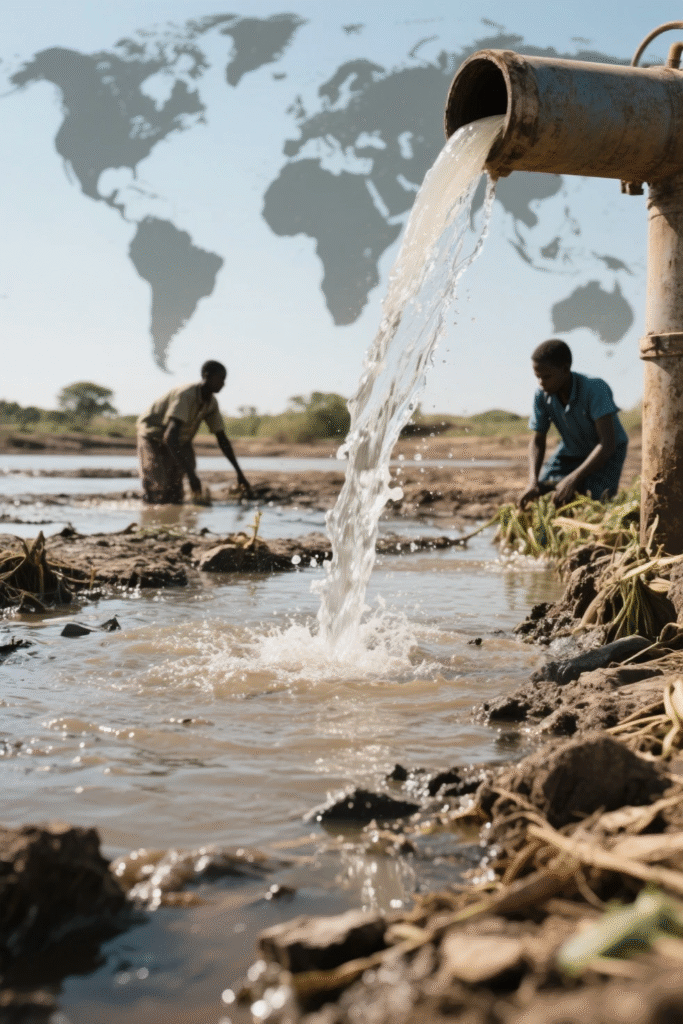Record-breaking heatwaves in Europe highlight the growing impact of climate change.

April 30, 2025 – Europe is in the grip of an alarming crisis as climate change drives record-breaking heatwaves, transforming spring into a season of scorching temperatures and environmental strain. From Spain to Scandinavia, the continent is experiencing extreme weather events that scientists attribute to the accelerating effects of climate change, raising urgent questions about adaptation, mitigation, and global cooperation in the face of a warming planet.
A Continent Under Heat Stress
The past weeks have seen temperatures soar to levels previously unthinkable for April. In southern Europe, Spain’s Andalusia region recorded a staggering 38°C (100°F) in Seville on April 27, marking the hottest April day in the country’s history, according to AEMET, Spain’s meteorological agency. France’s Météo-France issued heat alerts for 12 departments, with Lyon hitting 36°C (97°F), while Italy’s Rome saw thermometers climb to 35°C (95°F). Even northern nations like Germany and Sweden reported anomalies, with Berlin and Stockholm nearing 30°C (86°F), a full 10-15°C above seasonal averages.
These heatwaves are not isolated incidents but part of a broader pattern driven by climate change. The European Centre for Medium-Range Weather Forecasts (ECMWF) notes that rising global temperatures, coupled with natural phenomena like El Niño, have created a “perfect storm” for extreme weather. The Intergovernmental Panel on Climate Change (IPCC) has long warned that climate change amplifies the frequency and intensity of heatwaves, and 2025 is proving to be a stark illustration of those predictions.
The Human and Environmental Toll
The consequences of these climate change-driven heatwaves are profound. In Greece, Portugal, and southern France, wildfires have erupted, with over 200 fires reported in the past week alone. The Greek island of Rhodes, still recovering from devastating fires in 2023, saw renewed evacuations as flames consumed thousands of hectares of forest. Portugal’s Algarve region, a popular tourist destination, has been placed on high alert, with firefighting resources stretched to their limits.
Agriculture, a cornerstone of Europe’s economy, is under severe threat. The European Commission estimates that crop yields for wheat, maize, and olives could decline by up to 20% in southern Europe this year due to prolonged heat and drought. Farmers in Spain’s Castilla-La Mancha region report that olive groves are wilting under the relentless sun, while vineyards in France’s Bordeaux region face reduced grape quality. These losses exacerbate global food security concerns, as climate change continues to disrupt supply chains.
Public health is another casualty. Heat-related illnesses are spiking, particularly among the elderly and vulnerable populations. Hospitals in Madrid and Lisbon have reported a 30% increase in admissions for heatstroke and dehydration. In response, cities like Paris and Athens have opened cooling centers, but local governments are struggling to keep up with demand. Climate change is no longer an abstract threat—it is a daily reality for millions of Europeans.
The Science Behind the Crisis
Scientists are unequivocal: climate change is the primary driver of these extreme weather events. Global temperatures have risen by approximately 1.2°C since pre-industrial times, largely due to the burning of fossil fuels, deforestation, and industrial emissions. This warming has altered atmospheric patterns, leading to more frequent and severe heatwaves. The ECMWF reports that the jet stream, a key regulator of European weather, has become increasingly erratic, trapping hot air masses over the continent for longer periods.
Dr. Anna Petrova, a climatologist at the University of Oxford, explains, “Climate change is like loading the dice for extreme weather. What we’re seeing in Europe today—record-breaking heat, wildfires, and droughts—is exactly what models have predicted for a warming world. Without rapid reductions in greenhouse gas emissions, these events will become the norm, not the exception.”
The role of climate change is further amplified by feedback loops. For instance, melting Arctic ice reduces the planet’s reflectivity, allowing more heat to be absorbed by the oceans and atmosphere. Similarly, drying soils in southern Europe release less moisture into the air, intensifying heatwaves. These cascading effects underscore the urgency of addressing climate change at both local and global levels.
Policy and Public Response
The heatwaves have galvanized public and political action, though progress remains uneven. In major cities like Paris, Madrid, and Berlin, thousands of protesters have taken to the streets, demanding stronger policies to combat climate change. Youth-led movements, inspired by figures like Greta Thunberg, are calling for an immediate phase-out of coal and gas, alongside massive investments in renewable energy. “We can’t keep pretending climate change isn’t happening,” said Maria Costa, a 19-year-old activist in Lisbon. “Our leaders need to act now, or we’ll lose everything.”
The European Union, a global leader in climate policy, has pledged €500 million in emergency aid to support farmers and firefighters affected by the heatwaves. The EU’s Green Deal, which aims for net-zero carbon emissions by 2050, remains a cornerstone of its strategy to tackle climate change. However, critics argue that the pace of implementation is too slow. Some member states, particularly in Eastern Europe, continue to rely heavily on coal, while subsidies for fossil fuels persist in several countries.
Renewable energy adoption is a bright spot. In 2024, wind and solar power accounted for 30% of the EU’s electricity, up from 20% five years earlier. Yet, experts warn that scaling up renewables alone is insufficient without parallel efforts to improve energy efficiency, reforest degraded lands, and transition to sustainable agriculture. Climate change demands a holistic approach, and Europe’s ability to lead by example is under scrutiny.
A Global Challenge
Europe’s heatwaves are part of a global pattern of climate change-driven extremes. In 2025 alone, South Asia endured deadly floods, Australia battled record bushfires, and the United States faced hurricanes of unprecedented strength. The World Meteorological Organization (WMO) reports that 2024 was the hottest year on record, and 2025 is on track to surpass it. These events highlight the interconnected nature of climate change, which respects no borders.
International cooperation is critical, yet geopolitical tensions complicate efforts. The COP30 climate summit, scheduled for later this year in Brazil, will be a pivotal moment for nations to update their emissions reduction targets under the Paris Agreement. Developing nations, which contribute the least to climate change but suffer its worst impacts, are demanding greater financial support from wealthier countries. The EU has committed €100 billion annually to the Green Climate Fund, but analysts argue that trillions are needed to address the scale of the crisis.
Looking Ahead
As summer looms, Europe braces for potentially worse conditions. The ECMWF forecasts that climate change will likely intensify heatwaves through June and July, with drought risks escalating in the Mediterranean. Cities are implementing adaptation measures, such as expanding green spaces and retrofitting buildings for heat resistance, but these efforts are costly and time-intensive.
For ordinary citizens, the heatwaves are a wake-up call. From reducing energy consumption to supporting sustainable businesses, individuals are finding ways to contribute to the fight against climate change. “It’s overwhelming, but every small action counts,” said Elena Rossi, a teacher in Rome who has switched to a plant-based diet to lower her carbon footprint.
The message from scientists, activists, and policymakers is clear: climate change is reshaping the world, and the time for decisive action is now. Europe’s 2025 heatwaves are not just a regional crisis but a global warning. Without bold, coordinated efforts to cut emissions, protect ecosystems, and build resilience, the continent—and the planet—face a future of escalating extremes.

















